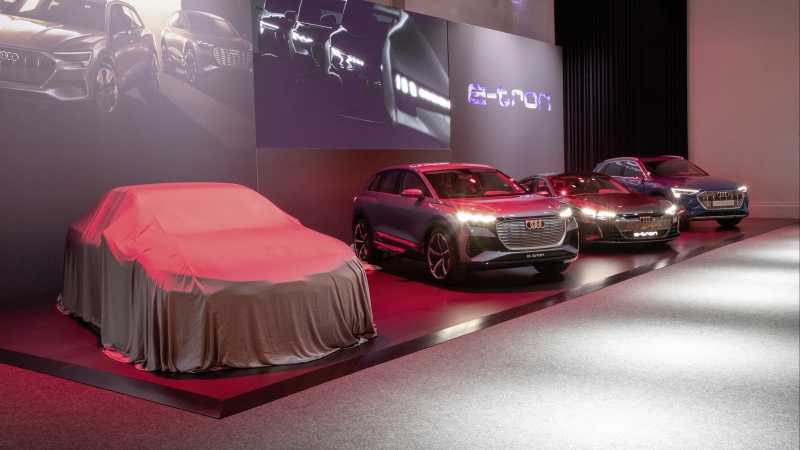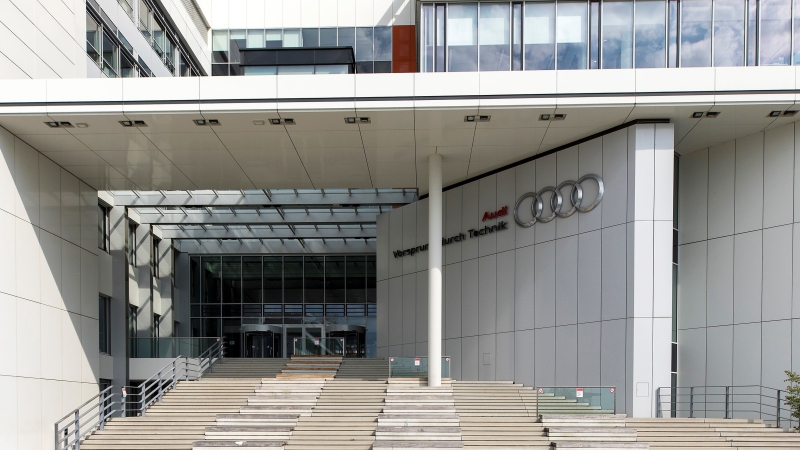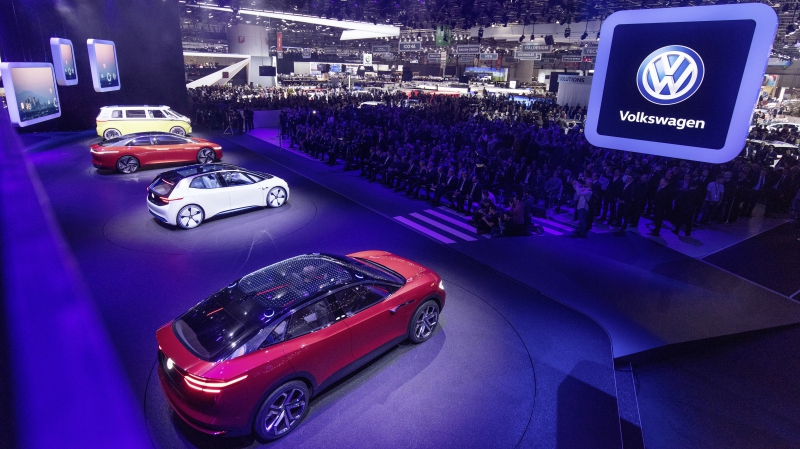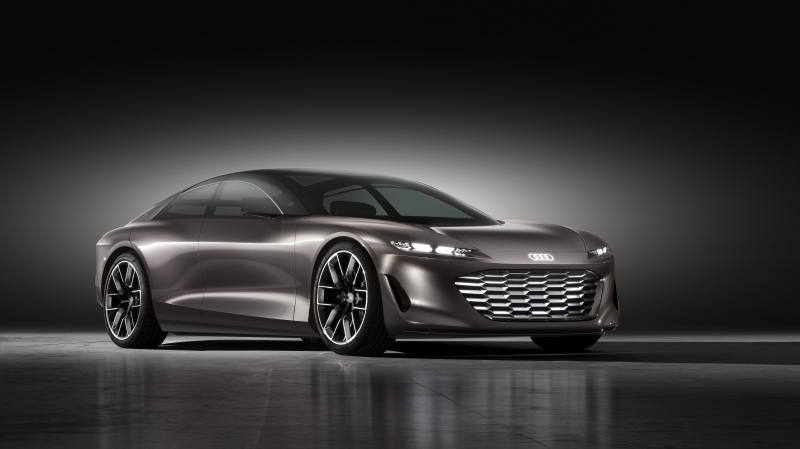As much as the automotive industry loves to harp on about “disruption” or “innovation”, not much happens. Most of the time, it is the same old story of building similar products that sell. Or, if someone else gets lucky, copy them. Occasionally, when the stars align, a manufacturer gets bored and splash some cash to shake up the formula. The most recent example of that is Audi’s Project Artemis.
What was Audi’s Project Artemis?

Back in 2020, some eggheads at Audi decided to become the cool kid on the block – Tesla. Forget big grilles, quattro, or more variations of Volkswagen’s EA888. Sod that. They want to be at the forefront of electrifying and automated autos.
But they weren’t just thinking about producing another pie-in-the-sky concept car. Oh no, they had big ideas. Audi tasked Project Artemis to “provide a blueprint for the future agile development of cars throughout the Volkswagen Group”. Audi CEO, Markus Duesmann said it will be able to develop “a pioneering model for Audi quickly and unbureaucratically”.

Leading Artemis was the former head of VW Autonomy, Alex Hitzinger, who had an interesting career history. Hitzinger’s most notable achievement was being the technical director of the Porsche 919 Hybrid program. Apple then poached Hitzinger for its mysterious Apple Car project from 2017 to 2019. After which, he re-joined the Volkswagen Group.
Mentored by Duesmann, Hitzinger was seen as the right man for the job thanks to his motorsports background. The CEO believed that Project Artemis needed somebody who wasn’t going to fall back into traditional car-making bureaucracy. However, Hitzinger later became more of a square peg fitting through those round rings.

In June 2020, Audi presented Project Artemis to the world with the promise of developing its first car by 2024, an autonomous electric limousine codenamed “Landjet”. The vehicle will utilise Audi’s modular Premium Platform Electric (PPE) platform, which Porsche and Bentley will share.
In December of that year, Audi legitimised its commitment to Project Artemis by formalising the organisation as Artemis GmbH. And for a moment, it looked like Artemis would become a new arm of Audi.
Trouble on the horizon

Unfortunately, just two months after becoming Artemis GmbH, rumours of trouble began circulating. These troubles started when Volkswagen Group’s announced that it is increasing its electrification targets for 2030.
The Group’s target went from half of all cars sold by the group being EVs to 70 per cent. Not an insignificant figure by any measure. And one that caused a scramble in the Group’s product plans.

Initially, the Group intended to use four model architectures, each fulfilling different powertrain roles. However, with such a high expected percentage of electrified vehicles sales, there was a need to simplify their arsenal. With this new Group goal in mind, Hitzinger’s limitless scope at Artemis looked like an unnecessary moonshot.
According to a report from German Manager Magazin, the management within Audi was “disappointed” with Hitzinger’s plans and ideas. The report stated that his ideas were “not suitable for profitable series production”.

More troubling news soon followed with reports saying that Artemis was falling behind schedule. Despite the long lead time for the “Landjet”, delays pushed its launch back by a year.
Artemis cited issues with developing newer autonomous software and setting up a technology organisation known as CARIAD, as reasons for the slower than expected progress. Even at this early stage “cultural friction” was already impeding Artemis’ vision.
What went wrong with Project Artemis?

It doesn’t take a leap of the imagination to see where the unease within Ingolstadt comes from. Whether Hitzinger’s groundwork for the “Landjet” was entirely justified or not, Volkswagen’s targets weighed heavily on Audi’s management.
Furthermore, it became increasingly clear to Audi that they needed something more than a single Tesla-fighter. Volkswagen is going big into EVs, and a single flagship EV wasn’t going to achieve its ambitious numbers.

With the clock ticking and the gravity of Volkswagen’s demands sinking in, Audi clipped Artemis’ independence and removed Hitzinger by May 2021. Audi took control of the development of the autonomous electric car, with Volkswagen Group’s CARIAD continuing with software development.
Amidst the fallout behind the scenes, Audi put out a positive message calling Artemis GmbH “a centre of competence for fast, modern development processes” and that the division will “move even closer to Audi’s Technical Development and reinforce the new innovation management”. A textbook “All is well, nothing to see here, move along” response.
The fruits of Audi’s Artemis Project

Though Project Artemis disappeared into the Audi machinery, it wouldn’t be the last we would hear of it. Soon after Hitzinger’s departure, Volkswagen unveiled a single unified electric architecture known as the Scalable Systems Platform (SSP).
Slated for a 2026 introduction, the SSP would replace the Group’s five existing platforms. These were the Golf’s MQB, A7’s MLB, Panamera’s MSB, the current electric MEB, and the PPE architectures. In addition to that, the SSP master plan included three separate implementation programs derived from Artemis.

According to the Volkswagen Group, Volkswagen will adopt the SSP through a high-volume program known as “Trinity”. As for Audi, the Group is implementing it with another derivative known as “Apollon”. And even though the Group hinted at a third program for Porsche, that plan came to a grinding halt due to a disagreement.

Little is known about how Project Artemis contributed to Audi and the Volkswagen Group as a whole. However, this disagreement with Porsche offered a brief view into its machinations in early 2022.
Porsche’s Artemis problem

The crux of the issue stems from VW Commercial Vehicle’s plant in Hanover contracted to build Artemis models for Audi, Porsche, and Bentley. It is understood that the plant will produce or assemble aspects of the Artemis developed parts and technologies. These components would then be transported to Porsche’s Leipzig or Bentley’s Crewe factories for final assembly.
The issue was big enough for Porsche to pay VW Commercial Vehicles €100 million to pull out of the SSP program. Pundits believed that Porsche wasn’t too keen on using the autonomous and efficiency-focused Artemis technologies for their driver-oriented models.
Truth be told, nobody outside the upper echelons of the Volkswagen Group knows what Artemis developed. And why Porsche was so insistent on keeping what Volkswagen was presenting them with at arm’s length. The closest understanding, we have is Audi’s vague “fast, modern development processes” description. Though it is doubtful that Hitzinger revolutionised Audi’s production process to such an extent in such a short time.
Audi’s Artemis Project vs BMW i

In many ways, Artemis GmbH echoes that of BMW’s i sub-brand. Starting as a think tank focused on sustainable production methods, BMW’s sub-brand produced two remarkable carbon-fibre creations – the i8 and i3. Audi parallels BMW too with a pair of Artemis-concept cars, the Sky Sphere and Grand Sphere.
Times have changed since and what was once an opportunity for experimentation have become the norm. All-electric and electrified powertrains are no longer the purview of the curious, but the demanded standard of the future. As a result, the i sub-brand has evolved into a moniker for BMW’s electrified and all-electric models.

A similar fate likely befell Hitzinger’s original vision. Audi doesn’t need a flagship demonstrator like what BMW did with its i8. It needed something with a wider scope to tackle the coming electric revolution. And they needed it now.
Was Project Artemis a failure?

So, all this begs the question – did Audi’s Project Artemis fail? As it is with many things in life, one set path won’t unfurl itself. Often, that path breaks off into multiple unseen routes, leaving us to make the best of it.
In a way, Project Artemis did fail to achieve its goals. Cut down in fear of an uncertain future, bits of its implementation continues to live on. And when it comes to rocking the unmoving and steadfast automotive game, it’s good enough to count as a success.

